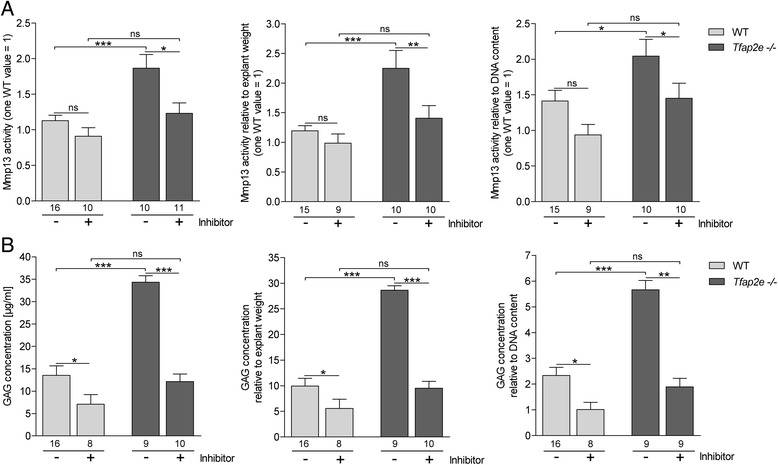Fig. 5.

Enhanced matrix metalloproteinase 13 activity and matrix degradation in articular cartilage explants deficient for activating enhancer binding protein 2, epsilon. Articular cartilage of the femoral head of adult wild-type (WT) and Tfap2e −/− mice (two per animal) was isolated and subjected to in vitro cultivation. Two days after establishment, a specific matrix metalloproteinase (Mmp13) inhibitor was added to a subset of the explants. Another 3 days later, the supernatants were collected, and Mmp13 activity (a) and glycosaminoglycan (GAG) concentrations (b) were determined. Both were significantly enhanced in media from the Tfap2e −/− explants compared with the WT explants (left). Treatment with the Mmp13 inhibitor resulted in a significant reduction in Mmp13 activity and GAG release in the Tfap2e −/− explants. This was also detectable in the supernatants of WT explants, albeit at a lower level. In addition, the absolute values for both parameters were normalized to the total wet weight (middle), as well as to the DNA content (right), of the corresponding explants. Here, similar results were discovered. The data are given as the means ± standard error of the mean. ns, Not significant; Tfap2e −/−, Deficient for activating enhancer binding protein 2, epsilon. *P < 0.05; **P < 0.01; ***P < 0.001. Numbers indicate individual explants used for each group
